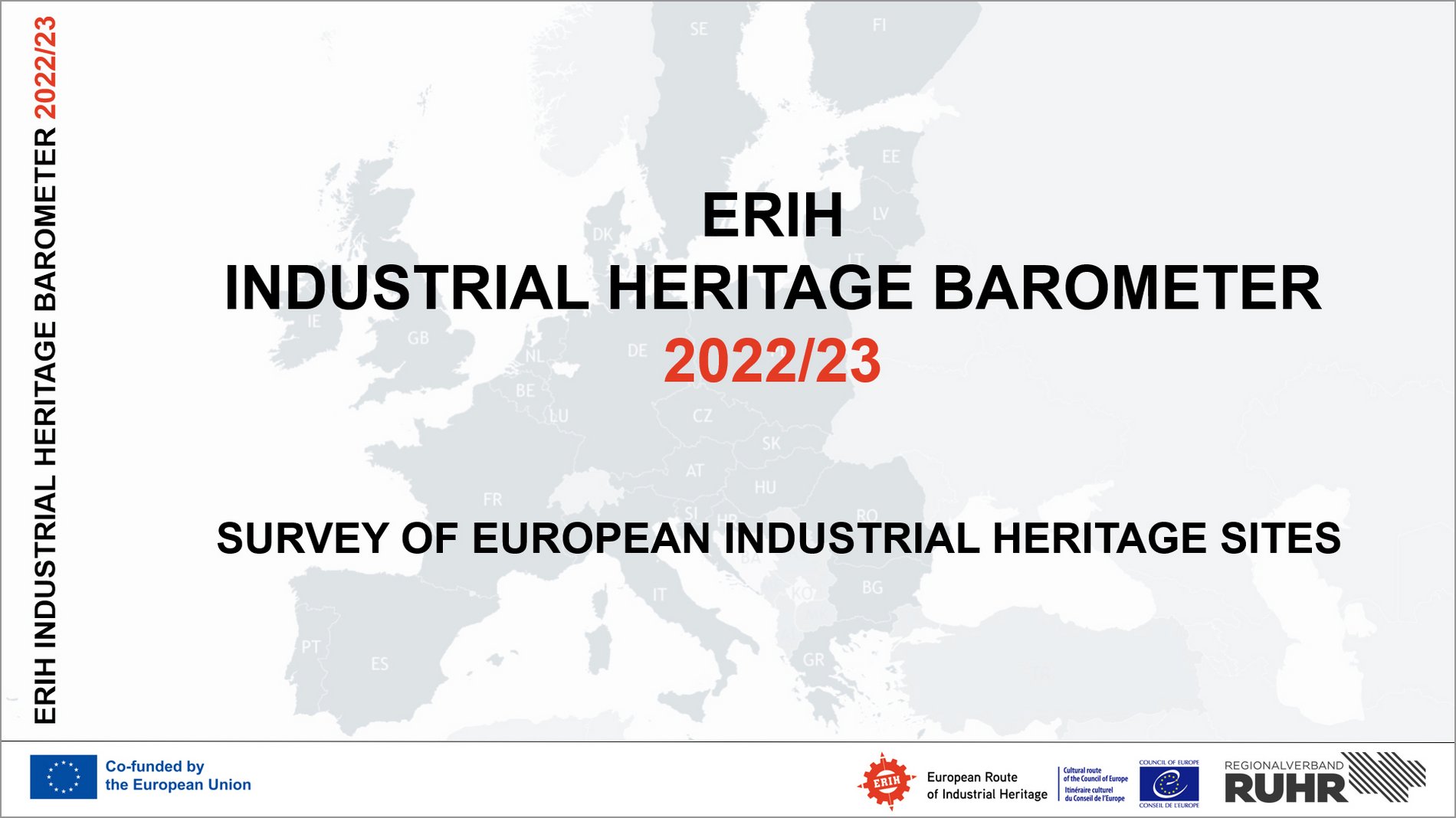"ERIH INDUSTRIAL HERITAGE BAROMETER"
ERIH'S SURVEY OF EUROPEAN INDUSTRIAL HERITAGE SITES
Since 2018, ERIH, in cooperation with the Statistics and Surveys Department of the Regionalverband Ruhr, has been conducting surveys on the situation of industrial heritage in Europe. A catalogue of questions on the thematic groups of core data, target groups, perspectives and actions was developed from questions frequently submitted to ERIH and made available for response in a Europe-wide online survey.
The data and responses from the survey, summarised in the 'ERIH Industrial Heritage Barometer', help ERIH to engage with policy makers, the press and the public. They are also used to prioritise activities and projects to ensure the most effective development of the network.

ERIH INDUSTRIAL HERITAGE BAROMETER 2022/23

The online survey for the ERIH Industrial Heritage Barometer 2022/23 was conducted from 6 March to 20 April 2023. All industrial heritage sites in Europe that are accessible to tourists were eligible to participate.
Summary of the results
84 industrial heritage sites or institutions from 11 European countries responded to the survey. Below is a summary of the results of the survey; the complete 'ERIH Industrial Heritage Barometer 2023/23' with detailed explanations and data, as well as numerous graphs, can be found in the download section below.
The data were collected for the "coronavirus pandemic years" 2021 and 2022. When analysing the responses, for some questions we also included data for 2020 from the Industrial Heritage Barometer 2020/21 for comparison purposes and presented them in the graphs. Together with the assessments of the current situation and the information on the measures and targets planned for 2023, the impact of the coronavirus pandemic and the restrictions imposed by the authorities to combat it, as well as developments after their expiry, can be read.
Core data
Status
46% of participating sites are publicly owned, 32% are operated by private organisations, 12% by foundations, 4% are corporate museums and 6% have other ownership.
Opening times (different due to coronavirus pandemic)
2021: 71% open all year, 18% seasonal, 11% closed
2022: 80% open all year, 17% seasonal, 3% closed
Staff
The reduction in opening hours or complete closure, as well as the loss of income, has forced many sites to reduce staff, especially seasonal staff and guides. Despite the gradual return to 'normal operations' in 2022, staffing levels have not (yet) been readjusted.
Finances
Significantly reduced (or even lost) income from admission fees, but also from special events or rentals that could not be carried out, led to massive gaps in the economic plans. These were partly mitigated by special public or private financial support (usually decreasing annually). The overall situation led to economic problems at many sites, which in some cases continue and fundamentally threaten the existence of individual sites.
Visitors
The annual number of visitors to each site varies, depending on factors such as location, size and attractiveness. Already in 2020, the Corona pandemic led to a significant drop. In 2021, they fall again slightly. With the end of the coronavirus pandemic and its restrictions, the number of visitors in 2022 rose encouragingly and even exceeded the number of visitors in 2019.
Thanks to their attractiveness, industrial heritage sites generally have a trans-regional appeal: in previous years, 60% of visitors came from the region, 30% from the country concerned and 10% were international visitors. Due to the general and museum-specific restrictions imposed by the coronavirus pandemic, the proportion of international visitors halved to 5% in both reporting years.
Target groups
Industrial heritage sites appeal to broad sections of the population (general public: 80 from 84 sites, families: 70). In addition, they pursue an important educational mission; for 45 sites, school groups are an important target group. The tourism target groups (Best Ager Over 50s: 59, Educational Travellers: 48, Young People: 68, and Mice Group: 37) are highly rated.
Perspectives
There is a clear turn towards the positive in the current assessment of the situation: in particular, the regional consumer climate, the development of visitor numbers, the financial situation in general as well as the expected economic result (in contrast to 2021) are assessed by a majority as satisfactory to very good.
Measures
Among the measures planned for 2023, improving energy efficiency, extending opening hours, reducing costs and recruiting staff are mentioned significantly more often than in 2021. Whereas in 2021 the main objectives were almost exclusively related to overcoming the corona pandemic and its consequences, 'normal' objectives such as improving the quality of the site and the exhibition, the financial situation and the implementation of structural measures are now mentioned again.
Downloads
ERIH Industrial Heritage Barometer 2022/23 - Questions and results
ERIH Industrial Heritage Barometer 2020/21 - Questions and results
ERIH Industrial Heritage Barometer 2019 - Results
ERIH Industrial Heritage Barometer 2019 - Questionnaire
ERIH Industrial Heritage Barometer 2018 - Results
ERIH Industrial Heritage Barometer 2018 - Questionnaire

